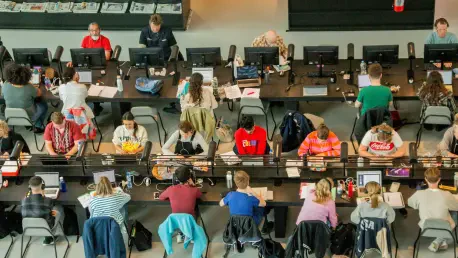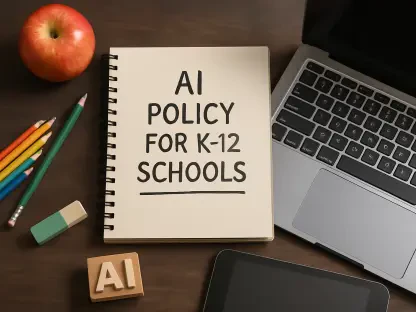In the evolving landscape of education, a growing emphasis has been placed on ensuring that students are not merely passive participants but active contributors to their learning environments. Far too often, the perspectives of young learners are overlooked, yet their insights can profoundly shape school policies, classroom dynamics, and overall culture. Research, including a significant study by Penn State College of Education Professor Dana Mitra, highlights the transformative potential of amplifying student voices through intentional practices. This approach not only boosts engagement but also fosters a sense of ownership among students, making education more relevant and impactful. By exploring the conditions and challenges surrounding student voice practices (SVPs), schools can uncover strategies to build partnerships with students. This article delves into the critical elements needed to create a culture where student input is valued and acted upon, paving the way for meaningful change.
Defining the Core of Student Voice Practices
What Constitutes Student Voice Practices?Student Voice Practices, commonly abbreviated as SVPs, encompass a wide array of mechanisms and activities designed to empower students to influence decisions within their schools. These can include advisory councils where students discuss policies, open classroom dialogues that encourage feedback on teaching methods, and collaborative decision-making processes that involve students in shaping rules or curricula. The essence of SVPs lies in shifting the traditional dynamic, positioning students as partners rather than just learners under instruction. When implemented thoughtfully, these practices allow students to contribute ideas that can lead to significant improvements in their educational experience. The focus is on creating structured opportunities for dialogue, ensuring that young voices are not only heard but also integrated into actionable outcomes that benefit the entire school community.
Why SVPs Matter in Modern EducationThe importance of SVPs extends beyond giving students a platform to speak; it fundamentally enhances the educational environment by fostering a sense of agency. When students feel their opinions carry weight, they are more likely to engage actively in their learning and develop critical skills like problem-solving and communication. Moreover, schools that prioritize student input often see improvements in overall climate, as trust between educators and learners strengthens. This approach also prepares students for future civic participation by teaching them how to advocate for change in a constructive manner. While the concept may seem straightforward, embedding SVPs into daily school life requires a deliberate shift in culture and mindset, addressing both practical and emotional barriers to ensure that student contributions are meaningful and sustained over time.
Building Blocks for Effective Implementation
Mindset, Heartset, and Skillset as PillarsSuccessfully amplifying student voices hinges on the integration of three vital dimensions: cognitive mindsets, emotive heartsets, and practical skillsets. A mindset shift among educators is essential, requiring a belief that students possess unique perspectives and deserve a role in shaping their education. Heartsets focus on the emotional connections, emphasizing the need for trust and safety so students feel secure enough to express their thoughts without fear of dismissal. Skillsets involve the tangible tools and training necessary to facilitate these interactions, such as structured forums or workshops on collaborative decision-making. These elements are deeply interconnected—trust can influence beliefs, while practical systems reinforce emotional bonds. Together, they form a robust framework that supports a culture of genuine student participation.
Sustaining Momentum Through IntegrationIntegrating these dimensions into the fabric of a school is no small feat, as it demands consistent effort and alignment across various levels. Educators must be supported through professional development to cultivate the right mindset and skills for engaging with students as partners. Emotional safety, a cornerstone of heartsets, requires ongoing attention to relationships, ensuring that students trust the adults around them to listen and respond fairly. Meanwhile, skillsets necessitate the creation of regular opportunities for dialogue, such as student-led committees or feedback sessions embedded into the school schedule. The synergy of these components helps maintain momentum, preventing student voice initiatives from becoming fleeting trends. Without this holistic approach, efforts risk being superficial, failing to create the lasting impact that true partnership with students can achieve.
Prioritizing Safety as a Foundation
Safety as the Bedrock of ExpressionBefore any student voice initiative can take root, the environment must be one where students feel physically and emotionally safe to share their thoughts. Research from urban school settings reveals that without this foundation, even the best-intentioned SVPs falter. Classrooms described as chaotic or “wild” often drown out opportunities for meaningful dialogue, leaving students reluctant to contribute. In contrast, “calm” environments—where teachers actively listen and adapt—encourage openness. Schools must address immediate safety concerns, whether through conflict resolution strategies during high-tension periods like lunch breaks or by increasing supportive staff presence in key areas. Only when safety is assured can students feel empowered to engage authentically in shaping their educational surroundings.
Emotional Trust as a CatalystBeyond physical safety, emotional trust between students and educators plays a pivotal role in amplifying voices. When students perceive that their teachers genuinely value their input and will not dismiss or belittle their ideas, they are far more likely to participate. Building this trust requires consistent, empathetic interactions and a commitment to transparency in how student feedback is used. For instance, if students suggest changes to school policies, educators must follow through or clearly explain why certain ideas cannot be implemented. This level of respect nurtures a sense of belonging, making students more confident in voicing their concerns and aspirations. Without emotional trust, even safe physical spaces can feel hollow, lacking the relational depth needed for SVPs to thrive in a meaningful way.
Addressing Systemic Barriers
Tackling Turnover and Resource GapsOne of the most persistent challenges to sustaining student voice practices lies in systemic issues like high staff turnover and limited resources. Frequent changes in teachers or administrators can disrupt the trust and continuity necessary for effective SVPs, as relationships must be rebuilt with each new face. Similarly, budget constraints or competing priorities often push student voice initiatives to the back burner, especially during crises. Strong leadership emerges as a critical factor in navigating these obstacles—school leaders who embed SVPs into the institution’s vision and allocate resources accordingly can help maintain focus. By prioritizing stability and support, schools can mitigate the impact of systemic disruptions and keep student engagement at the forefront.
Adapting to Unforeseen ChallengesSystemic barriers are often compounded by unexpected events, such as policy shifts or external pressures, which can derail even well-planned initiatives. Flexibility and resilience become essential in these scenarios, requiring schools to adapt their approaches without losing sight of core goals. For example, when resources are tight, leveraging existing structures like parent-teacher meetings for student input can be a cost-effective alternative to new programs. Additionally, fostering a culture where student voice is seen as integral rather than optional helps ensure its survival through turbulent times. Leaders must also advocate at the district level for sustained funding and policy support, recognizing that overcoming systemic hurdles is not just a school-level task but a broader educational priority that demands collective effort.
Customizing Strategies for Diverse Settings
Contextualizing Student Voice EffortsWhile the principles underlying SVPs are broadly applicable, their success often depends on tailoring strategies to the unique context of each school. Research across varied urban environments shows that factors like student demographics, school size, and existing culture influence how initiatives are received. A middle school with frequent behavioral challenges might need to focus first on safety protocols before introducing advisory councils, while a high school with strong student leadership could dive straight into collaborative policy-making. Understanding these nuances allows educators to design interventions that resonate with their specific community, ensuring that efforts to amplify voices are both relevant and effective in driving change.
Balancing Universal and Local NeedsStriking a balance between universal best practices and local needs is crucial for sustainable impact. Core elements like trust-building and skill development remain non-negotiable, but the methods for achieving them must adapt to the school’s reality. For instance, mentorship programs might work well in one setting to foster emotional safety, while another school might benefit more from peer-led discussion groups. Engaging with students and staff to identify priorities ensures that initiatives are not imposed top-down but grow organically from within. This customization prevents the pitfalls of a one-size-fits-all approach, allowing SVPs to address specific challenges while adhering to proven frameworks that support student agency across diverse educational landscapes.
Actionable Pathways Forward
Laying the Groundwork for ChangeTurning the vision of amplified student voices into reality requires actionable steps that address both culture and logistics. Schools should invest in ongoing training for educators and students alike, focusing on skills like active listening, conflict resolution, and collaborative problem-solving. Establishing consistent platforms for input—such as regular advisory circles or student representation on decision-making bodies—ensures that voices are not just heard sporadically but woven into the school’s routine. Districts can play a role by providing resources and policy backing, reinforcing the importance of SVPs at a systemic level. These practical measures, grounded in a commitment to partnership, lay the groundwork for a culture where student contributions drive meaningful improvements.
Reflecting on Past Efforts to Shape TomorrowLooking back, the journey to amplify student voices in schools has revealed both remarkable potential and persistent challenges, as evidenced by comprehensive studies in urban settings. Efforts in various institutions showed that when safety was prioritized and trust nurtured, students engaged more deeply, shaping their environments in transformative ways. Leadership proved pivotal, as did the integration of mindset shifts with practical tools, ensuring that initiatives endured through systemic upheavals. Moving forward, schools must commit to refining these practices, focusing on tailored strategies and sustained support to overcome barriers. By learning from what worked and adapting to evolving needs, educational communities can continue to build spaces where every student’s voice not only echoes but also inspires lasting change.









